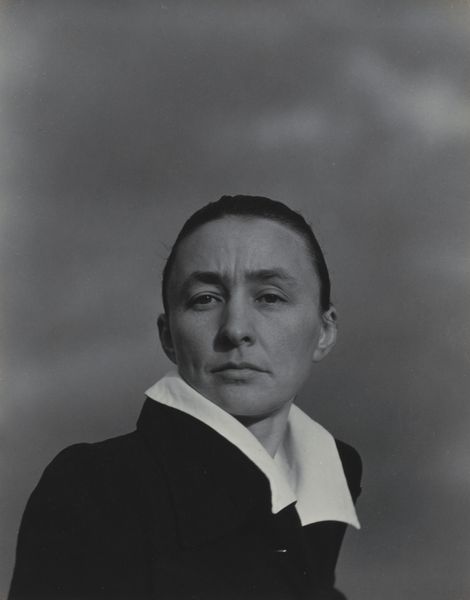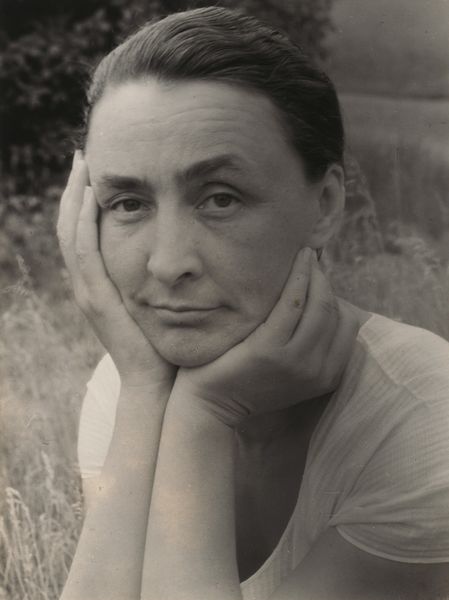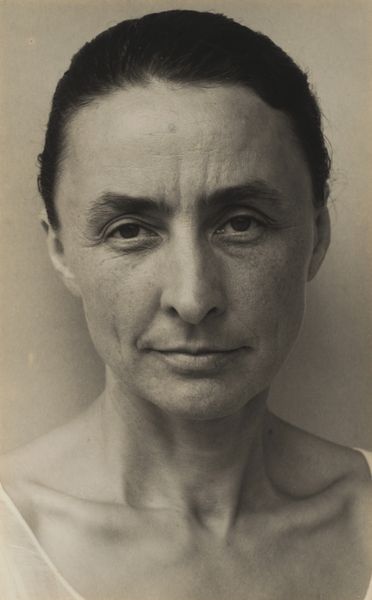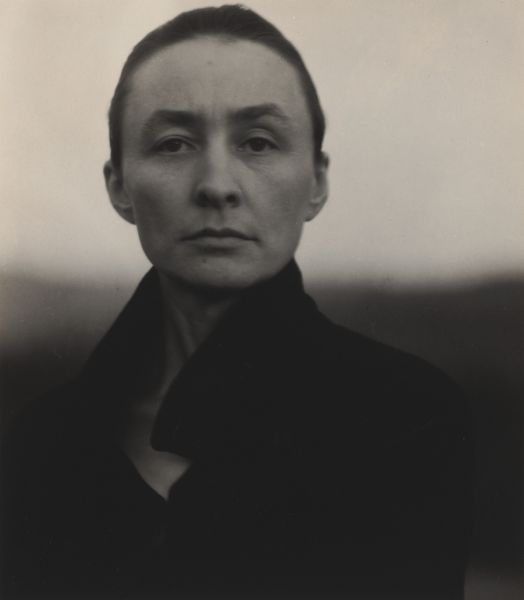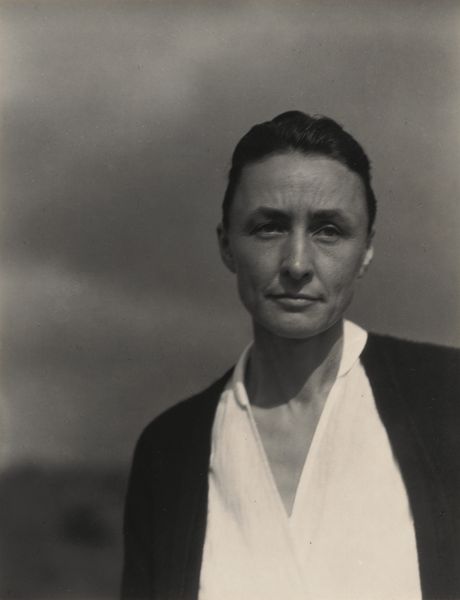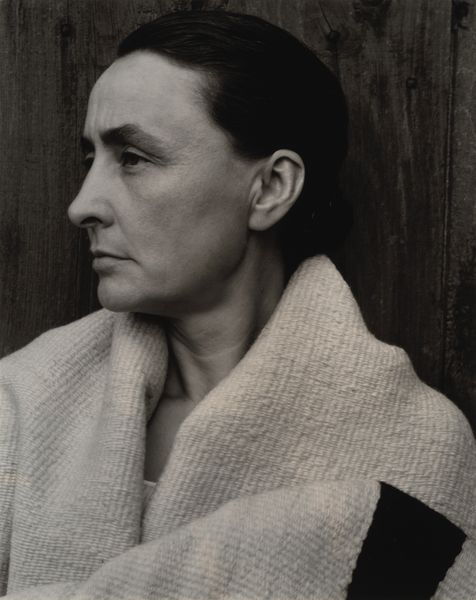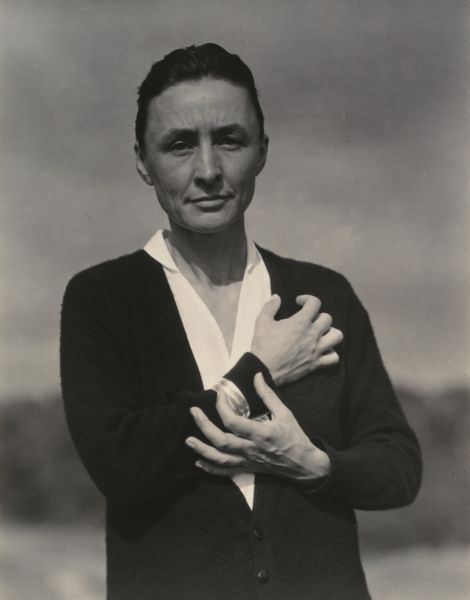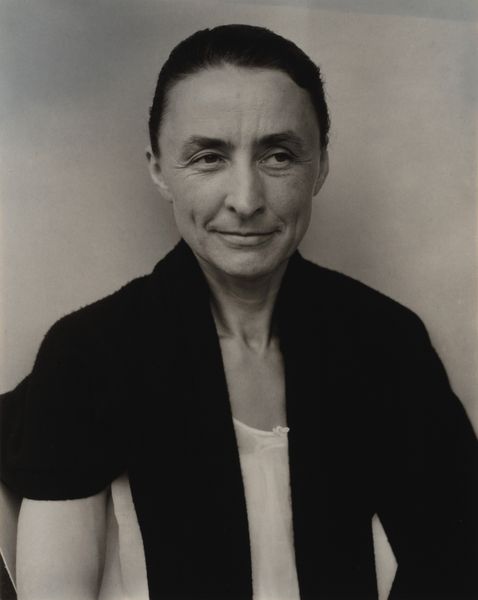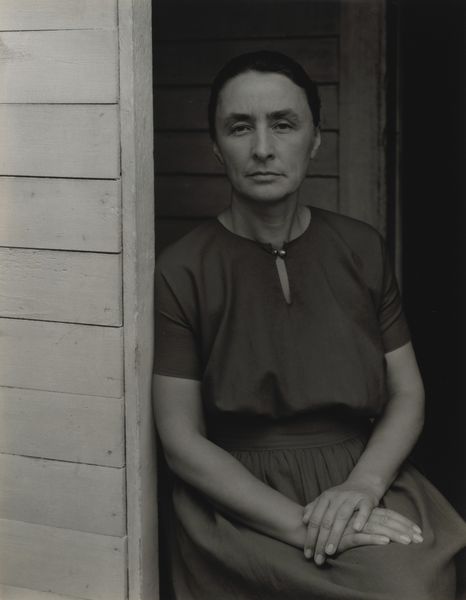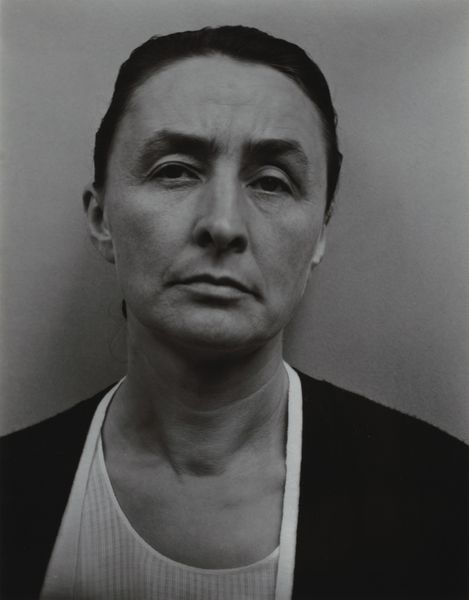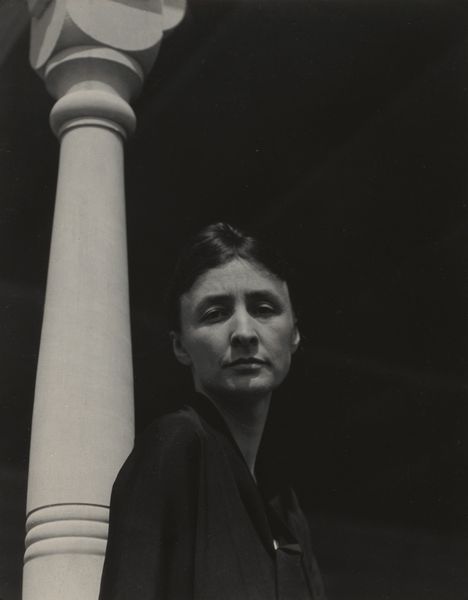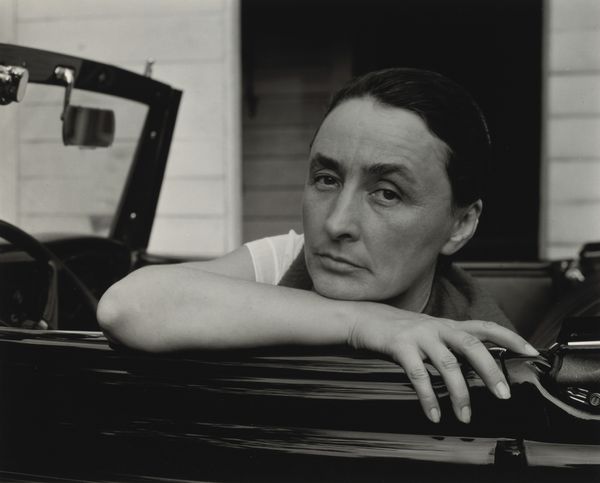
photography, gelatin-silver-print
#
portrait
#
self-portrait
#
portrait image
#
portrait
#
photography
#
historical photography
#
gelatin-silver-print
#
modernism
Dimensions: sheet (trimmed to image): 24.1 x 18.9 cm (9 1/2 x 7 7/16 in.) mount: 51 x 37.8 cm (20 1/16 x 14 7/8 in.)
Copyright: National Gallery of Art: CC0 1.0
Curator: Here we have a gelatin silver print, a portrait of Georgia O’Keeffe by Alfred Stieglitz, taken in 1933. Editor: What strikes me immediately is the intensity in her gaze. It's unflinching. Almost… confrontational? You get the sense she's daring you to truly see her. Curator: Exactly! Stieglitz was her husband, but their relationship was incredibly complex. He photographed her obsessively over decades, crafting an image of her that both celebrated and perhaps, in some ways, confined her. It makes you wonder about the dynamics of power inherent in their relationship, doesn't it? He’s creating an archive of her existence, through his own eyes. Editor: Absolutely. The image exists at the intersection of artistic vision and lived experience of womanhood, filtered through a male gaze. There's this tension – the empowering portrayal of a strong, independent woman, and yet, also the reality that this portrayal is mediated through a male artist. Curator: The high contrast enhances that drama. It accentuates her strong bone structure and the lines on her face. But they aren't presented as flaws; instead, they speak to the experience and wisdom she possessed. What’s visible is the undeniable artistry that marks the very nature of her presence. It’s magnetic! Editor: Yes, it pulls us in! Knowing what we know of Stieglitz's body of work documenting O’Keeffe, this portrait functions almost as an exploration of aging and representation, even beauty standards themselves. How do we, as viewers now, contend with the shifting lenses that change perception over time? Curator: I think it makes us question authorship. Whose portrait is it, really? Is it Stieglitz’s vision of O’Keeffe, O'Keeffe's collaboration in creating her own persona, or is it something else entirely? It could simply be the byproduct of two artists enmeshed in both life and work. It speaks volumes about the fluidity between image and reality, especially concerning public identity. Editor: Well, I find myself sitting with that tension you identified between objectification and empowerment – and pondering on the historical forces at play shaping gendered experiences and artistic expression itself. Curator: For me, it highlights a vital truth: seeing – and really understanding – something, or someone, requires a willingness to engage with complexity. A little darkness with the light!
Comments
No comments
Be the first to comment and join the conversation on the ultimate creative platform.

